New National Coach Museum
Published Sunday, March 15, 2009.

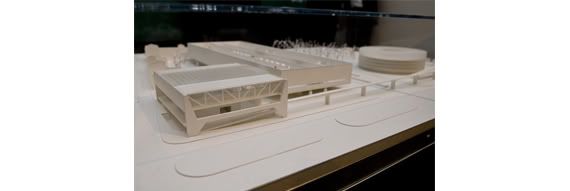
The project for the New National Coach Museum, designed by Brazilian architect Paulo Mendes da Rocha in collaboration with Ricardo Bak Gordon, has been surrounded by controversy since it was first presented to the public last year. Besides specific reservations that were raised regarding the sensitivity of the operation, it’s the very procedure that seems to motivate the most passionate reactions. The site is, after all, one of the most important urban fronts of the city of Lisbon.
The construction of the new museum will celebrate the 100th birthday of the proclamation of the Portuguese First Republic in 1910. The closeness of the inauguration date is most probably the reason why the process has been running so hasty, resulting in a small public participation – of particular importance in such sensitive context.
The initial proposal received a negative review of the city’s administration, that objected to the construction of a multi-storey car park in the riverfront area. The architect Mendes da Rocha acknowledged his discontentment for the modification to his original concept, sustaining the maintenance of the long aerial walkway that connects the main buildings with the northern margin of the Tagus river.
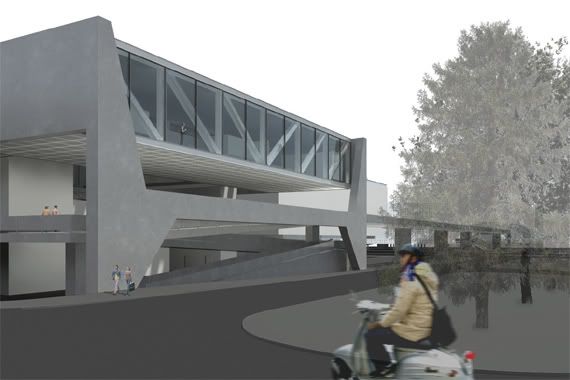

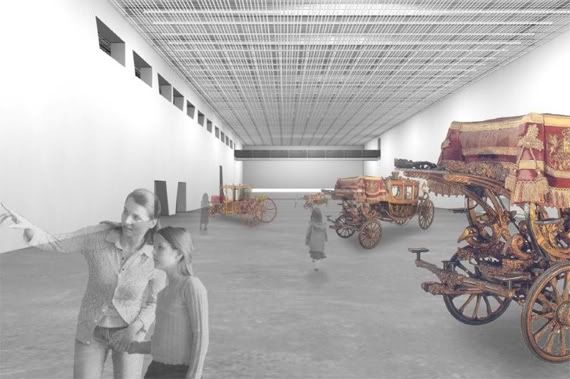
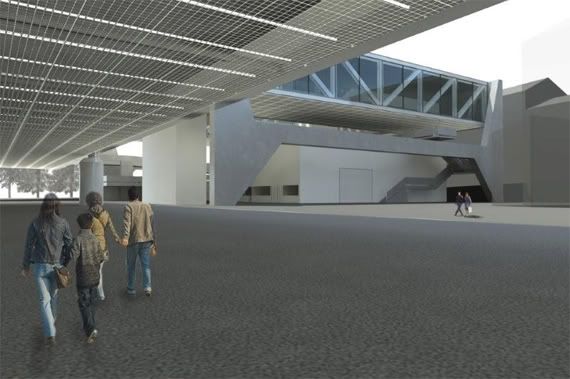
Sustaining the concept of the new museum, Mendes da Rocha underlined two questions: «a basic criteria for the exhibition of the remarkable patrimony» and the insertion in the monumental urban context. The project therefore faces a double challenge: to review the architectural identity of the museum – the most visited in Portugal – and the urban identity of one of the most significant tourist attractions of the city.
Facing such a great responsibility, it is imperative that we reflect on how contemporary values of ‘modernity’, as stated by the architect, are materialized by the proposal. Contemporary urban design faces many important issues such as the balance between built fabric and empty spaces, the restoring of identities, the intensification of land use, the promotion of mixed uses and, finally, the introduction of sustainable habits in city life. The expression of these functions should materialize in design solutions that open the possibility to multiple forms of engagement. Contemporaneity has been establishing exactly the rejection of mono-functionality. The city should offer the possibility of appropriation, experimentation, evasion. It should allow people to meet one another and provide the freedom to be isolated from the flow of activities.
As we consider the available images of the project it is possible to elaborate an appreciation of how – or if – those theoretical possibilities where translated into practical strategies of design.
The new buildings widen the open space of the equipments, offering an extensive area to the public domain. They also introduce a basic connection of those spaces, both by making the ground level accessible and by setting up a walking passageway to the riverfront.
Other issues remain, however, open for questioning, for example regarding the definition of that wide walking space, concerning its differentiation and the necessary balance between the different rhythms of users. Are recreational activities, or information technologies, going to be implemented? Is it going to allow interaction and experimentation? How is the local identity going to materialize, both in the landscape and in graphic elements? How is the public going to relate with the space, colonize it, and give it a sense and urbanity?
The project of Mendes da Rocha is, in that sense, a work that doesn’t ‘hybridize’ with the action of urban planning. The big volumes stand over the new territory, its architecture revealing itself as the opposite to a possible material celebration of complexity and programmatic diversity.
The presence of the new elevated building results in a staggering structural and formal weight. It is, in fact, that infrastructural expression that motivates the harshest reactions – and this is something that should be thought upon, as to the way in which the possibilities of a desired public life are to be cherished in that setting.
It is, then, an architecture of grand gesture. The wide volumes produce extensive walls that collide with the ‘small urbanity’ of the surrounding buildings. Here is a building that doesn’t envelope space. Intentionally, or not, it is the opposite of that which one can find in the Belém Cultural Center, by Vittorio Gregotti, where public space is interiorized and scaled.
It’s legitimate to question how these worries were – if at all – considered in the intervention programme and its resulting architectural design. In this project one can clearly recognize that which Paulo Mendes da Rocha brings to Lisbon – in continuity to some of his recent works in very diverse contexts. It is not so easy to identify that which, in this particular work, Lisbon has brought to the Brazilian architect.
The confrontation with the Belém Cultural Center is therefore relevant. For in this building a sense of observation and reciprocity between the city and the architectural design is revealed, and not a preconceived idea of style.
As a public project, on its most representative dimension, one must question the way in which architecture expresses its values – and which. The New National Coach Museum is presented as a gesture of ‘modernity’ and «contrast between the new and the old» - as stated by Álvaro Siza. Lets question what that means, then. Do we talk of modernity as a ‘style’ – a recipient to a merely formal logic, whose legitimacy is achieved from being recognisable and institutionally certified?
Or do we think of ‘modernity’ as an affirmation of contemporary values of innovation and creativity, of urbanity and public life? Do we talk, then, of forms or their content? These are questions that cannot simply remain in the realm of dissertation, as they should translate in the concrete materialization of the building and its surrounding spaces.
ENGLISH EDITION
The English-only edition of the blog A Barriga de um Arquitecto is no longer being updated. Please visit the main page to access new content, additional information and links.
ARCHIVES | ARQUIVO
September 2008 October 2008 November 2008 December 2008 January 2009 February 2009 March 2009 April 2009 May 2009 June 2009 July 2009 August 2009 September 2009 October 2009 November 2009 December 2009 January 2010 February 2010 March 2010 April 2010 May 2010 June 2010 July 2010 August 2010 November 2010 January 2011 February 2011 March 2011 June 2011 July 2011 October 2011 December 2011
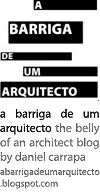
Very nice article. You have shown the memorable of this place. New National Coach Museum is still in my memories till now. Its unforgettable.